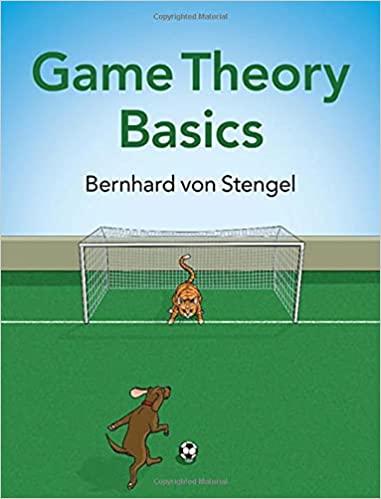Consider the following zero-sum game, a simplified version of Poker adapted from Kuhn (1950). A deck has
Question:
Consider the following zero-sum game, a simplified version of Poker adapted from Kuhn (1950). A deck has three cards (of rank High, Middle, and Low), and each player is dealt a card. All deals are equally likely, and of course the players get different cards. A player does not know the card dealt to the other player. After seeing his hand, player I has the option to Raise \((R)\) or Fold \((F)\). When he folds, he loses one unit to player II. When he raises, player II has the option to meet \((m)\) or pass \((p)\). When player II chooses "pass", she has to pay one unit to player I. When player II chooses "meet", the higher card wins, and the player with the lower card has to pay two units to the winning player.
(a) Draw a game in extensive form that models this game, with information sets, and payoffs to player I at the leaves.
(b) Simplify this game by assuming that at an information set where a player's move is always at least as good as the other move, no matter what the other player's move or the chance move were or will be, then the player will choose that move. Draw the simplified extensive form game.
(c) What does the simplification in (b) have to do with weakly dominated strategies? Why is the simplification legitimate here?
(d) Give the strategic form of the simplified game from (b) and find an equilibrium of that game. What are the behavior probabilities of the players in that equilibrium? What is the unique payoff to the players in equilibrium?
Step by Step Answer:






